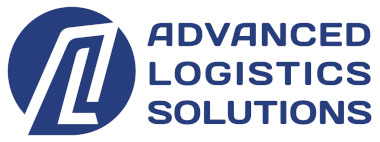
Executive Summary
Delivered Duty Paid (DDP) shipping terms promise simplicity by placing maximum responsibility on sellers for customs clearance, duties, and delivery. However, this apparent convenience often conceals significant financial risks, compliance vulnerabilities, and operational inefficiencies that can substantially impact business profitability and regulatory standing. This comprehensive analysis examines the complete landscape of DDP transactions, providing strategic frameworks for risk assessment and management in international trade operations.
Understanding DDP Shipping: Strategic Analysis and Risk Management Framework
(DDP交货条件的全貌:国际贸易中的战略性风险管理)
1 · The Strategic Context of DDP in International Trade
Delivered Duty Paid represents one of eleven Incoterms® 2020 rules governing international commercial transactions, placing the maximum obligation on sellers while promising buyers a streamlined, all-inclusive pricing structure. Understanding the true implications of DDP terms requires comprehensive analysis beyond surface-level convenience.
Fundamental Structure and Obligations
Seller’s Comprehensive Responsibilities: Under DDP terms, the seller assumes responsibility for the entire logistics chain from origin to final destination:
Transportation and Logistics:
- Complete Transportation Arrangement: Organization of all transportation modes from origin to named destination
- Export and Import Clearance: Management of both export formalities at origin and import procedures at destination
- Risk Transfer Point: Risk remains with seller until goods are delivered at named place
- Insurance Considerations: While not mandatory under DDP, sellers often include insurance in their cost calculations
Financial Obligations:
- Duty and Tax Payment: Payment of all import duties, taxes, and customs fees in the destination country
- Clearance Costs: All costs associated with customs clearance including broker fees and documentation
- Transportation Costs: Complete transportation expenses including inland freight at both origin and destination
- Hidden Cost Absorption: Often includes unspecified administrative fees and mark-ups
Documentation and Compliance:
- Export Documentation: Preparation and submission of all export-related documents
- Import Documentation: Management of import documentation and regulatory filings
- Regulatory Compliance: Ensuring compliance with both export and import country regulations
- Record Keeping: Maintenance of trade documentation (though access for buyers remains limited)
The Importer of Record Complexity
Legal and Regulatory Implications: The designation of importer of record under DDP terms creates complex legal and compliance considerations:
Traditional DDP Structure:
- Foreign Entity as IOR: Seller or their appointed agent acts as the importer of record
- Compliance Responsibility: Legal responsibility for customs compliance technically rests with the IOR
- Documentation Control: Import documentation remains under seller’s control
- Audit Trail Challenges: Buyer lacks direct access to official import records
Practical Realities:
- Ultimate Liability: Despite not being the IOR, buyers often face consequences for compliance failures
- Enforcement Actions: CBP and other agencies may pursue consignees regardless of IOR designation
- Recall and Safety Issues: Product liability and recall responsibilities typically follow ownership
- Reputational Risk: Compliance failures affect buyer’s business reputation regardless of technical responsibility
2 · Comprehensive Cost Analysis and Hidden Financial Impacts
The apparent simplicity of DDP pricing often masks complex cost structures that can significantly impact total landed costs and profitability margins.
Direct Cost Components and Mark-ups
Visible Cost Elements: DDP quotes typically bundle multiple cost components into a single price:
| Cost Category | Typical Components | Hidden Mark-up Potential |
|---|---|---|
| Base Product Cost | Manufacturing/sourcing cost | 0-5% administrative loading |
| International Freight | Ocean/air freight charges | 10-20% service mark-up |
| Customs Duties | Actual duty rates | 5-15% handling fee addition |
| Clearance Fees | Broker and filing fees | 25-50% service premium |
| Inland Transportation | Destination delivery | 15-30% coordination charge |
| Documentation | Certificate and permit costs | 20-40% processing fee |
Cost Opacity Challenges:
- Bundled Pricing: Inability to validate individual cost components
- Exchange Rate Padding: Hidden margins in currency conversion calculations
- Service Level Ambiguity: Unclear service levels for included transportation
- Volume Discount Capture: Seller retention of volume-based discounts
Indirect Cost Implications
Operational Inefficiencies: Beyond direct costs, DDP terms often create operational inefficiencies:
Inventory and Working Capital:
- Extended Lead Times: Lack of control over routing and clearance timing
- Safety Stock Requirements: Increased inventory needs due to uncertainty
- Cash Flow Impact: Payment terms often favor seller in DDP transactions
- Opportunity Costs: Capital tied up in slower-moving supply chains
Risk-Related Costs:
- Compliance Penalties: Potential fines for documentation or classification errors
- Detention and Demurrage: Charges from delays outside buyer’s control
- Expediting Costs: Premium charges to recover from delays
- Insurance Gaps: Potential uncovered risks in seller-arranged insurance
Comparative Cost Modeling
DDP vs. Alternative Term Comparison: Strategic evaluation requires comprehensive comparison across different Incoterms:
| Metric | DDP | DAP | CIF | FOB |
|---|---|---|---|---|
| Cost Transparency | Low | Medium | High | Highest |
| Control Level | Minimal | Moderate | High | Maximum |
| Risk Exposure | Hidden | Defined | Clear | Transparent |
| Flexibility | Low | Medium | High | Maximum |
| Administrative Burden | Low | Medium | Medium-High | Highest |
Total Cost of Ownership Analysis:
- Direct Cost Comparison: Line-item analysis of all cost components
- Indirect Cost Quantification: Estimation of operational and risk-related costs
- Opportunity Cost Assessment: Evaluation of foregone benefits from alternative approaches
- Long-term Impact Analysis: Multi-period cost modeling including relationship implications
3 · Compliance Risks and Regulatory Vulnerabilities
The transfer of customs compliance responsibilities under DDP terms creates significant regulatory risks that extend beyond immediate financial considerations.
Customs Compliance Challenges
Classification and Valuation Risks: Accuracy in customs classification and valuation remains critical despite seller responsibility:
HTSUS Classification Issues:
- Generic Classification: Sellers often use broad classifications to expedite clearance
- Rate Shopping: Selection of classifications based on duty minimization rather than accuracy
- Product Evolution: Classification lag for new or modified products
- Audit Exposure: Retroactive assessment risk from classification reviews
Customs Valuation Concerns:
- Transfer Pricing: Complex valuation in related-party transactions
- Assist Inclusions: Proper inclusion of buyer-provided assists in customs value
- Royalty and License Fees: Correct treatment of intellectual property payments
- Subsequent Adjustments: Handling of post-importation value adjustments
Documentation Deficiencies:
- Incomplete Records: Insufficient documentation for CBP’s 5-year retention requirement
- Accessibility Issues: Difficulty obtaining documents controlled by seller
- Language Barriers: Documentation in foreign languages complicating review
- Audit Readiness: Inability to respond effectively to customs audits
Partner Government Agency (PGA) Requirements
Multi-Agency Compliance Complexity: Various U.S. government agencies impose requirements beyond basic customs clearance:
FDA Requirements:
- Prior Notice: Food and drug shipments require advance FDA notification
- Facility Registration: Verification of foreign manufacturer registrations
- Product Codes: Accurate FDA product code assignments
- Detention Risks: Product holds for inspection or testing
EPA Regulations:
- TSCA Certification: Toxic Substances Control Act compliance for chemicals
- Vehicle and Engine: Conformity requirements for vehicles and engines
- Pesticide Devices: Registration requirements for certain products
- Refrigerant Management: Specific requirements for products containing refrigerants
Other Agency Requirements:
- USDA/APHIS: Agricultural product permits and inspections
- FCC: Radiofrequency device authorization requirements
- DOT: Transportation equipment safety standards
- CPSC: Consumer product safety standards and certifications
Trade Remedy and Special Program Considerations
Antidumping and Countervailing Duties: Dynamic trade remedy obligations create ongoing compliance challenges:
AD/CVD Exposure:
- Rate Volatility: Frequent changes in duty rates through administrative reviews
- Scope Determinations: Uncertainty about product coverage under orders
- Cash Deposit Requirements: Immediate payment obligations for estimated duties
- Liquidation Delays: Extended periods before final duty determination
Section 301 and Other Trade Actions:
- Tariff Lists: Products subject to additional duties under trade actions
- Exclusion Processes: Complex procedures for obtaining duty relief
- Retroactive Application: Potential retroactive duty assessments
- Country of Origin: Critical importance of accurate origin determination
4 · Risk Management Framework and Mitigation Strategies
Effective management of DDP-related risks requires comprehensive frameworks addressing financial, operational, and compliance dimensions.
Risk Assessment and Prioritization
Systematic Risk Evaluation: Organizations should conduct thorough risk assessments before accepting DDP terms:
Risk Categories and Impact Assessment:
| Risk Category | Probability Factors | Potential Impact | Mitigation Priority |
|---|---|---|---|
| Financial | Seller reliability, market volatility | High - Direct cost impact | Critical |
| Compliance | Product complexity, regulatory scrutiny | Very High - Penalties and delays | Critical |
| Operational | Supply chain complexity, volume | Medium - Efficiency loss | Important |
| Reputational | Industry visibility, customer sensitivity | High - Long-term damage | Important |
| Strategic | Market position, competitive factors | Medium - Competitive disadvantage | Moderate |
Risk Scoring Methodology:
- Likelihood Assessment: Historical data and predictive indicators
- Impact Quantification: Financial and operational impact modeling
- Risk Appetite Alignment: Comparison with organizational risk tolerance
- Resource Allocation: Prioritization of mitigation efforts based on risk scores
Contractual Risk Mitigation
Strategic Contract Provisions: Well-crafted contracts can significantly reduce DDP-related risks:
Transparency Requirements:
- Cost Breakdown: Mandatory provision of detailed cost components
- Documentation Access: Right to all customs and shipping documentation
- Classification Disclosure: Advance notification of HTSUS classifications
- Change Notification: Requirements for advance notice of any changes
Performance Standards:
- Delivery Metrics: Specific on-time delivery requirements with penalties
- Compliance Standards: Adherence to all applicable regulations and standards
- Quality Assurance: Right to audit compliance and quality processes
- Corrective Actions: Defined procedures for addressing failures
Liability and Indemnification:
- Compliance Liability: Clear allocation of regulatory compliance responsibility
- Indemnification Provisions: Seller indemnification for compliance failures
- Insurance Requirements: Minimum insurance coverage requirements
- Dispute Resolution: Efficient mechanisms for resolving conflicts
Operational Risk Controls
Process and System Controls: Implementation of operational controls to manage DDP risks:
Visibility and Monitoring:
- Shipment Tracking: Real-time visibility systems for all shipments
- Document Management: Centralized repository for all trade documentation
- Compliance Monitoring: Automated screening for compliance issues
- Performance Dashboards: Key metrics tracking and alerting systems
Vendor Management:
- Due Diligence: Comprehensive vetting of sellers and their service providers
- Performance Evaluation: Regular assessment of vendor performance
- Relationship Management: Strategic engagement with key suppliers
- Contingency Planning: Backup plans for vendor failures
Internal Controls:
- Approval Processes: Formal approval requirements for DDP terms
- Documentation Standards: Standardized documentation requirements
- Training Programs: Staff education on DDP risks and controls
- Audit Programs: Regular internal audits of DDP transactions
5 · Strategic Alternatives to DDP Terms
Understanding and evaluating alternatives to DDP enables organizations to optimize their international trade operations while maintaining appropriate risk management.
Alternative Incoterm Strategies
Delivered at Place (DAP) Advantages: DAP terms offer similar convenience with better risk allocation:
Structural Benefits:
- Duty Control: Buyer manages customs clearance and duty payment
- Documentation Access: Direct access to all import documentation
- Broker Selection: Choice of trusted customs broker
- Compliance Management: Direct control over regulatory compliance
Cost Implications:
- Transparency: Clear visibility into actual duty and clearance costs
- Optimization Opportunities: Ability to optimize classification and valuation
- Volume Leverage: Direct capture of volume discounts
- Duty Planning: Strategic duty management through planning tools
Free Carrier (FCA) and FOB Considerations: Greater control with increased responsibility:
Operational Control:
- Freight Management: Direct relationship with carriers
- Routing Decisions: Control over transportation routing and timing
- Service Level Selection: Choice of service levels based on needs
- Consolidation Opportunities: Ability to consolidate shipments for efficiency
Strategic Benefits:
- Supply Chain Visibility: Complete visibility throughout transportation
- Risk Management: Clear understanding and control of risks
- Cost Optimization: Maximum opportunity for cost reduction
- Flexibility: Ability to adjust strategies based on conditions
Hybrid Approaches and Innovative Solutions
Customized Trade Term Arrangements: Organizations can negotiate modified terms that balance convenience with control:
DDP with Modifications:
- Nominated Forwarder: Seller uses buyer’s designated freight forwarder
- Transparent Pricing: Detailed cost breakdown requirements
- Documentation Rights: Full access to all documentation
- Audit Rights: Right to audit seller’s compliance processes
Managed Services Models:
- Fourth-Party Logistics (4PL): Comprehensive supply chain management
- Control Tower Models: Centralized visibility and control platforms
- Integrated Partnerships: Deep collaboration with service providers
- Performance-Based Contracts: Contracts based on outcomes rather than activities
Technology-Enabled Solutions
Digital Platforms and Visibility Tools: Modern technology platforms can mitigate many traditional DDP risks:
Supply Chain Visibility Platforms:
- Real-Time Tracking: End-to-end shipment visibility
- Document Digitization: Digital capture and storage of all documentation
- Compliance Automation: Automated compliance checking and alerting
- Analytics and Reporting: Comprehensive analytics for decision support
Blockchain and Distributed Ledger:
- Document Authenticity: Immutable record of trade documentation
- Multi-Party Coordination: Seamless coordination among trade parties
- Smart Contracts: Automated execution of trade terms
- Audit Trail: Complete, transparent audit trail
6 · Implementation Framework and Best Practices
Successfully managing DDP arrangements or transitioning to alternative approaches requires systematic implementation frameworks and adherence to best practices.
Assessment and Planning Phase
Current State Analysis: Comprehensive evaluation of existing DDP arrangements:
Performance Evaluation:
- Cost Analysis: Detailed analysis of total landed costs under DDP
- Service Performance: Assessment of delivery reliability and timing
- Compliance Review: Evaluation of regulatory compliance status
- Risk Assessment: Identification of current and potential risks
Stakeholder Engagement:
- Internal Alignment: Coordination across procurement, logistics, and finance
- Supplier Communication: Engagement with current and potential suppliers
- Service Provider Evaluation: Assessment of logistics service providers
- Customer Considerations: Understanding of customer requirements and expectations
Strategy Development:
- Objective Setting: Clear definition of goals and success criteria
- Option Evaluation: Comprehensive assessment of alternatives
- Risk-Return Analysis: Balancing risk reduction with cost and complexity
- Implementation Planning: Detailed planning for strategy execution
Execution and Transition Management
Phased Implementation Approach: Systematic transition from current state to target operating model:
Pilot Program Development:
- Scope Definition: Selection of initial products or trade lanes
- Partner Selection: Identification of cooperative suppliers for pilot
- System Setup: Implementation of necessary systems and processes
- Performance Monitoring: Intensive monitoring of pilot results
Scaled Deployment:
- Gradual Expansion: Progressive expansion based on pilot learnings
- Process Refinement: Continuous improvement of processes
- System Integration: Full integration with enterprise systems
- Training Rollout: Comprehensive training for all stakeholders
Performance Optimization:
- Continuous Monitoring: Ongoing tracking of key performance indicators
- Issue Resolution: Rapid identification and resolution of problems
- Process Improvement: Systematic enhancement of processes
- Relationship Management: Strategic management of partner relationships
Governance and Continuous Improvement
Governance Structure: Establishment of appropriate oversight and management structures:
Organizational Framework:
- Steering Committee: Executive oversight of trade terms strategy
- Operational Management: Day-to-day management of trade operations
- Risk Committee: Oversight of compliance and risk management
- Performance Review: Regular review of performance and strategy
Performance Management:
- KPI Framework: Comprehensive metrics for all aspects of operations
- Benchmarking: Comparison with industry best practices
- Reporting Systems: Regular reporting to stakeholders
- Corrective Actions: Systematic approach to addressing deficiencies
Continuous Improvement Process:
- Regular Reviews: Periodic assessment of strategy effectiveness
- Market Monitoring: Tracking of market and regulatory changes
- Innovation Integration: Adoption of new technologies and practices
- Knowledge Management: Capture and sharing of lessons learned
7 · Case Studies in DDP Management and Optimization
Real-world examples provide valuable insights into successful DDP risk management and alternative strategies.
Case Study 1: Electronics Importer Transformation
Company Profile: Mid-size electronics importer with $50M annual import volume, primarily from Asian suppliers
Initial Situation: The company relied heavily on DDP terms, experiencing:
- Cost Opacity: 15-20% higher landed costs than market benchmarks
- Compliance Issues: Multiple customs holds and penalties
- Delivery Delays: Average 3-5 day delays beyond promised delivery
- Documentation Gaps: Inability to respond to customs audits effectively
Transformation Strategy:
Phase 1: Risk Assessment and Planning
- Cost Analysis: Detailed breakdown revealing 18% embedded mark-ups
- Compliance Review: Identification of systematic classification errors
- Vendor Evaluation: Assessment of supplier capabilities and relationships
- Alternative Modeling: Financial modeling of different term options
Phase 2: Pilot Implementation
- Term Transition: Move to DAP terms with top 5 suppliers
- Broker Selection: Engagement of specialized customs broker
- System Implementation: Deployment of visibility and compliance platform
- Process Development: Creation of standardized import processes
Phase 3: Full Deployment
- Complete Transition: All suppliers moved to DAP or FCA terms
- Integration Achievement: Full integration with enterprise systems
- Performance Optimization: Continuous improvement initiatives
- Relationship Enhancement: Strategic partnerships with key suppliers
Results and Impact:
- Cost Reduction: 22% reduction in total landed costs
- Compliance Improvement: Zero customs penalties in 18 months
- Delivery Performance: 95% on-time delivery achievement
- Visibility Enhancement: Complete visibility to all shipments and costs
- Working Capital: 15% improvement in working capital efficiency
Case Study 2: Retail Chain Supply Chain Optimization
Company Profile: National retail chain importing private label products from multiple countries
Challenge Context: Managing diverse supplier base with varying capabilities and DDP arrangements:
- Inconsistent Performance: Wide variation in delivery and compliance
- Cost Variations: Significant cost differences for similar products
- Seasonal Pressures: Difficulty managing peak season volumes
- Quality Issues: Problems hidden until goods arrived at distribution centers
Strategic Response:
Segmentation Strategy:
- Supplier Categorization: Classification based on capability and volume
- Term Assignment: Different terms for different supplier categories
- Risk Assessment: Risk-based approach to term selection
- Performance Standards: Clear standards for all suppliers
Technology Implementation:
- Visibility Platform: Comprehensive supply chain visibility solution
- Compliance Automation: Automated compliance checking and management
- Cost Analytics: Detailed analytics for cost optimization
- Supplier Portal: Self-service portal for supplier collaboration
Process Standardization:
- Import Procedures: Standardized procedures across all locations
- Documentation Requirements: Clear documentation standards
- Training Programs: Comprehensive training for staff and suppliers
- Audit Processes: Regular audits of compliance and performance
Outcomes:
- Cost Optimization: 15% reduction in logistics costs
- Compliance Excellence: 99.5% compliance rate achieved
- Inventory Reduction: 20% reduction in safety stock requirements
- Supplier Performance: 30% improvement in supplier performance metrics
8 · Regulatory Considerations and Compliance Framework
Understanding the regulatory landscape is essential for managing DDP arrangements and ensuring compliance with U.S. import requirements.
U.S. Customs and Border Protection Requirements
Importer Security Filing (ISF) and Entry Requirements: Critical compliance elements regardless of Incoterm selection:
ISF Timing and Accuracy:
- 24-Hour Rule: Filing required 24 hours before vessel loading
- Data Elements: Ten required data elements plus two for carriers
- Accuracy Standards: High accuracy requirements with significant penalties
- Amendment Procedures: Processes for correcting filed information
Entry Documentation Standards:
- Entry Summary: CBP Form 7501 accuracy and completeness
- Commercial Documentation: Invoice, packing list, and other requirements
- Certificates and Permits: Product-specific documentation requirements
- Electronic Filing: ACE system requirements and capabilities
Forced Labor and Trade Enforcement
Withhold Release Orders (WRO) and UFLPA: Increasing focus on forced labor in supply chains:
Due Diligence Requirements:
- Supply Chain Mapping: Understanding of complete supply chain
- Risk Assessment: Identification of forced labor risks
- Documentation: Evidence of compliance with forced labor prohibitions
- Remediation: Procedures for addressing identified issues
UFLPA Specific Requirements:
- Rebuttable Presumption: Presumption of forced labor for Xinjiang products
- Clear and Convincing Evidence: High standard for overcoming presumption
- Supply Chain Documentation: Comprehensive documentation requirements
- Importer Guidance: Detailed guidance for compliance strategies
Product-Specific Regulatory Requirements
Sector-Specific Compliance: Various products face additional regulatory requirements:
Consumer Products:
- CPSC Requirements: Safety standards and certification requirements
- Testing and Certification: Third-party testing for children’s products
- Labeling Requirements: Country of origin and other labeling
- Recall Procedures: Obligations in case of safety issues
Food and Agricultural Products:
- FDA Food Safety: FSMA requirements and facility registrations
- USDA Requirements: Permits and inspections for agricultural products
- Bioterrorism Act: Prior notice and registration requirements
- Labeling Standards: Nutritional and ingredient labeling requirements
9 · Financial Planning and Cost Optimization Strategies
Effective management of international trade terms requires sophisticated financial planning and cost optimization approaches.
Total Cost of Ownership Modeling
Comprehensive Cost Framework: Understanding true costs requires analysis beyond quoted prices:
Direct Cost Categories:
- Product Costs: Base price and any additional charges
- Transportation: All freight and logistics costs
- Duties and Taxes: Import duties, taxes, and fees
- Clearance Costs: Customs broker and related fees
- Inland Delivery: Final delivery to destination
Indirect Cost Factors:
- Inventory Carrying: Cost of capital tied up in inventory
- Risk Costs: Insurance and risk mitigation expenses
- Administrative Costs: Internal resources for management
- Opportunity Costs: Lost opportunities from suboptimal terms
Dynamic Cost Modeling:
- Scenario Analysis: Multiple scenarios based on different assumptions
- Sensitivity Analysis: Understanding impact of variable changes
- Monte Carlo Simulation: Statistical modeling of uncertainty
- Optimization Algorithms: Mathematical optimization of cost structures
Working Capital and Cash Flow Management
Financial Efficiency Strategies: Optimizing cash flow through strategic term selection:
Payment Term Optimization:
- Letter of Credit: Balancing security with cost
- Open Account: Managing risk in open account transactions
- Payment Timing: Aligning payment with cash flow cycles
- Currency Management: Managing foreign exchange exposure
Inventory Investment:
- Safety Stock Optimization: Balancing service levels with carrying costs
- Lead Time Management: Reducing lead times to minimize inventory
- Postponement Strategies: Delaying customization to reduce risk
- Vendor Managed Inventory: Shifting inventory ownership timing
Duty Optimization Strategies
Strategic Duty Management: Legitimate strategies for minimizing duty burden:
Classification Optimization:
- Proper Classification: Ensuring accurate HTSUS classification
- Ruling Requests: Obtaining binding rulings for certainty
- Engineering Analysis: Product modifications for favorable classification
- Legal Interpretation: Understanding classification principles
Valuation Strategies:
- First Sale Rule: Using manufacturer’s sale price when applicable
- Assists Exclusion: Proper treatment of buyer-provided assists
- Related Party Pricing: Managing transfer pricing considerations
- Retroactive Adjustments: Handling post-importation adjustments
Program Utilization:
- Free Trade Agreements: Leveraging FTA benefits where applicable
- Duty Drawback: Recovering duties on exported products
- Foreign Trade Zones: Using FTZs for duty deferral or reduction
- Temporary Importation: TIB for qualifying temporary imports
10 · Future Trends and Strategic Considerations
The landscape of international trade terms continues evolving in response to technological advancement, regulatory changes, and market dynamics.
Digital Transformation Impact
Technology-Driven Changes: Emerging technologies are reshaping how trade terms are managed:
Blockchain and Distributed Ledger:
- Smart Contracts: Automated execution of trade terms
- Document Management: Immutable document trails
- Multi-Party Coordination: Seamless coordination among parties
- Transparency Enhancement: Complete visibility for all stakeholders
Artificial Intelligence Applications:
- Risk Prediction: AI-driven risk assessment and prediction
- Cost Optimization: Machine learning for cost optimization
- Compliance Automation: Automated compliance checking
- Decision Support: AI-enhanced decision-making tools
IoT and Real-Time Visibility:
- Shipment Tracking: Real-time location and condition monitoring
- Predictive Analytics: Anticipating delays and issues
- Quality Monitoring: Continuous quality monitoring during transit
- Exception Management: Automated exception identification and response
Regulatory Evolution
Anticipated Regulatory Changes: Understanding likely regulatory developments:
Trade Facilitation:
- Single Window Systems: Integrated government processing
- Trusted Trader Programs: Benefits for compliant importers
- Risk-Based Enforcement: Targeted enforcement based on risk
- Digital Documentation: Acceptance of electronic documents
Compliance Requirements:
- Supply Chain Transparency: Increasing transparency requirements
- Sustainability Standards: Environmental and social compliance
- Security Requirements: Enhanced security standards
- Data Protection: Privacy and data protection requirements
Market and Business Model Evolution
Changing Business Models: Evolution of international trade business models:
Platform Economy:
- Digital Marketplaces: Direct supplier-buyer connections
- Service Aggregation: Bundled logistics and trade services
- Data Monetization: Value creation from trade data
- Ecosystem Development: Comprehensive trade ecosystems
Service Innovation:
- Managed Services: Comprehensive trade management services
- Risk Transfer Products: Insurance and hedging products
- Compliance as a Service: Outsourced compliance management
- Analytics Services: Advanced analytics and optimization services
11 · Strategic Recommendations and Implementation Guidance
Assessment Framework for Organizations
Organizational Readiness Evaluation: Systematic assessment of readiness for trade term optimization:
Current State Analysis:
- Volume Assessment: Analysis of import volumes and patterns
- Complexity Evaluation: Assessment of product and regulatory complexity
- Capability Review: Evaluation of internal capabilities and resources
- Risk Profile: Understanding of organizational risk tolerance
Strategic Objectives:
- Cost Objectives: Clear cost reduction or optimization goals
- Service Goals: Service level requirements and expectations
- Compliance Standards: Regulatory compliance objectives
- Growth Plans: Alignment with business growth strategies
Implementation Roadmap
Phased Approach to Optimization: Systematic approach to improving trade term management:
Phase 1: Foundation (Months 1-3)
- Assessment: Comprehensive assessment of current state
- Strategy Development: Development of optimization strategy
- Partner Evaluation: Evaluation of suppliers and service providers
- Pilot Planning: Planning for pilot implementation
Phase 2: Pilot Implementation (Months 4-6)
- Limited Deployment: Implementation with select suppliers
- Process Development: Development of standardized processes
- System Implementation: Deployment of necessary systems
- Performance Monitoring: Intensive monitoring of results
Phase 3: Scaled Deployment (Months 7-12)
- Expansion: Gradual expansion to more suppliers
- Optimization: Continuous improvement of processes
- Integration: Full system and process integration
- Standardization: Standardization across organization
Phase 4: Optimization (Ongoing)
- Continuous Improvement: Ongoing process optimization
- Innovation Integration: Adoption of new technologies
- Performance Excellence: Achievement of best-in-class performance
- Strategic Evolution: Evolution of strategy based on results
Key Success Factors
Critical Elements for Success:
- Executive Support: Strong leadership commitment to optimization
- Cross-Functional Collaboration: Coordination across departments
- Change Management: Effective management of organizational change
- Vendor Partnership: Collaborative relationships with suppliers
- Technology Enablement: Appropriate technology tools and platforms
- Continuous Learning: Commitment to continuous improvement
12 · Conclusion and Strategic Insights
Key Takeaways
Strategic Importance of Trade Terms: The selection and management of international trade terms represents a critical strategic decision that impacts cost structure, operational efficiency, compliance risk, and competitive positioning. Organizations that approach these decisions systematically, with comprehensive analysis and strategic planning, achieve superior outcomes.
Beyond Surface Simplicity: While DDP terms offer apparent simplicity, the hidden costs, compliance risks, and operational limitations often outweigh the convenience benefits. Organizations must look beyond surface-level convenience to understand true total cost of ownership and risk implications.
Value of Control and Visibility: Maintaining control over the import process and achieving visibility into costs and operations provides significant value through cost optimization opportunities, risk management capabilities, and operational flexibility. The investment in capabilities to manage imports directly often generates substantial returns.
Strategic Recommendations
For Importers Currently Using DDP:
- Comprehensive Assessment: Conduct thorough analysis of current DDP arrangements
- Risk Evaluation: Identify and quantify compliance and financial risks
- Alternative Analysis: Evaluate alternative terms and their implications
- Pilot Programs: Test alternative approaches with willing suppliers
- Gradual Transition: Implement changes systematically based on results
For Organizations Evaluating Trade Terms:
- Strategic Alignment: Ensure trade terms align with business strategy
- Capability Development: Build internal capabilities for trade management
- Technology Investment: Invest in appropriate technology platforms
- Partner Selection: Choose suppliers and service providers strategically
- Continuous Improvement: Establish processes for ongoing optimization
For Industry Practitioners:
- Knowledge Development: Continuously develop trade expertise
- Network Building: Build relationships across trade ecosystem
- Technology Adoption: Stay current with technology developments
- Regulatory Awareness: Maintain awareness of regulatory changes
- Best Practice Sharing: Participate in industry knowledge sharing
Final Considerations
The management of international trade terms requires balancing multiple considerations including cost, risk, control, and operational complexity. While DDP terms may appear attractive for their simplicity, the hidden costs and risks often make alternative approaches more advantageous for organizations seeking to optimize their international trade operations.
Success in international trade requires more than selecting appropriate terms; it demands comprehensive understanding of the entire trade ecosystem, strategic thinking about risk and opportunity, and systematic execution of well-planned strategies. Organizations that invest in developing these capabilities position themselves for sustainable competitive advantage in global markets.
The evolution of technology, regulation, and business models will continue to reshape the landscape of international trade. Organizations that build flexible, adaptive capabilities for managing trade terms and relationships will be best positioned to capitalize on opportunities and navigate challenges in this dynamic environment.
This comprehensive analysis provides strategic frameworks and practical insights for understanding and managing DDP shipping terms in international trade. Organizations seeking to optimize their trade term strategies or improve their import operations may benefit from consultation with experienced customs brokers, international trade attorneys, and logistics professionals who can provide guidance tailored to specific industry requirements and operational contexts.



